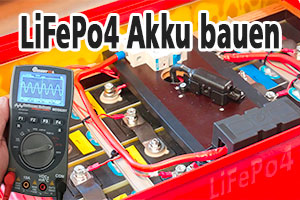Also ich hab meine 3 LED Routine so gebaut:
Code:
volatile unsigned char uc_tim0ovf;
volatile unsigned char uc_red ; //Helligkeitswert Rot 0...255
volatile unsigned char uc_green ; //Helligkeitswert Grün 0...255
volatile unsigned char uc_blue ; //Helligkeitswert Blau 0...255
// Timer 0 overflow interrupt service routine
interrupt [TIM0_OVF] void timer0_ovf_isr(void)
{
uc_tim0ovf++ ;
if (uc_tim0ovf==0) {
uc_tim0ovf++;
}
if (uc_red>=uc_tim0ovf) {
# asm ("SBI PORTC,0"); //Die Rote LED Port C,0
}
else
# asm ("CBI PORTC,0");
if (uc_green>=uc_tim0ovf) {
#asm ("SBI PORTC,1"); //Die Grüne LED Port C,1
}
else
#asm ("CBI PORTC,1");
if (uc_blue>=uc_tim0ovf) {
#asm ("SBI PORTC,2"); //Die Blaue LED Port C,2
}
else
#asm ("CBI PORTC,2");
}
.....
void main(void)
{
// Declare your local variables here
// Input/Output Ports initialization
// Port B initialization
// Func7=In Func6=In Func5=In Func4=In Func3=In Func2=In Func1=In Func0=In
// State7=T State6=T State5=T State4=T State3=T State2=T State1=T State0=T
PORTB=0x00;
DDRB=0x00;
// Port C initialization
// Func6=In Func5=In Func4=In Func3=In Func2=OUT Func1=OUT Func0=OUT
// State6=T State5=T State4=T State3=T State2=T State1=T State0=T
PORTC=0x00;
DDRC=0x07;
// Port D initialization
// Func7=In Func6=In Func5=In Func4=In Func3=In Func2=In Func1=In Func0=In
// State7=T State6=T State5=T State4=T State3=T State2=T State1=T State0=T
PORTD=0x00;
DDRD=0x00;
// Timer/Counter 0 initialization
// Clock source: System Clock
// Clock value: 8000 kHz
TCCR0=0x01;
TCNT0=0x00;
.....
Das Ganze auf 30 Werte erweitern und bei Wunsch noch eine Multiplexroutine einbauen und fertig ist der Hanomag (die PWM).
Was noch fehlt ist die Datenschnittstelle zum Datenempfang, sowie eine eventuell nötige Adressierung.
Wie das Timingmässig hinhaut kannst Du ja nochmal mit AVR Studio 4 Austesten.
Ein paar Zuweisungen fehlen in dem Code noch - ich hab CODEVISION AVR benutzt.










 Zitieren
Zitieren

Lesezeichen